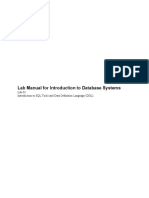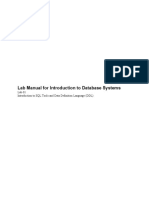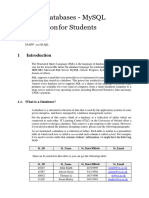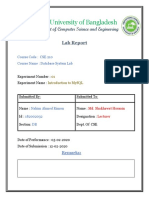0% found this document useful (0 votes)
55 views8 pagesDBMS Lab Report 1
The document provides an introduction to databases, emphasizing their importance in data management and the use of SQL for database operations. It includes a guide for installing XAMPP, creating a database and tables, and executing SQL commands through phpMyAdmin. The conclusion highlights the practical skills gained in database management, which are essential for various real-world applications.
Uploaded by
deepmitra68Copyright
© © All Rights Reserved
We take content rights seriously. If you suspect this is your content, claim it here.
Available Formats
Download as PDF, TXT or read online on Scribd
0% found this document useful (0 votes)
55 views8 pagesDBMS Lab Report 1
The document provides an introduction to databases, emphasizing their importance in data management and the use of SQL for database operations. It includes a guide for installing XAMPP, creating a database and tables, and executing SQL commands through phpMyAdmin. The conclusion highlights the practical skills gained in database management, which are essential for various real-world applications.
Uploaded by
deepmitra68Copyright
© © All Rights Reserved
We take content rights seriously. If you suspect this is your content, claim it here.
Available Formats
Download as PDF, TXT or read online on Scribd
/ 8



































































































